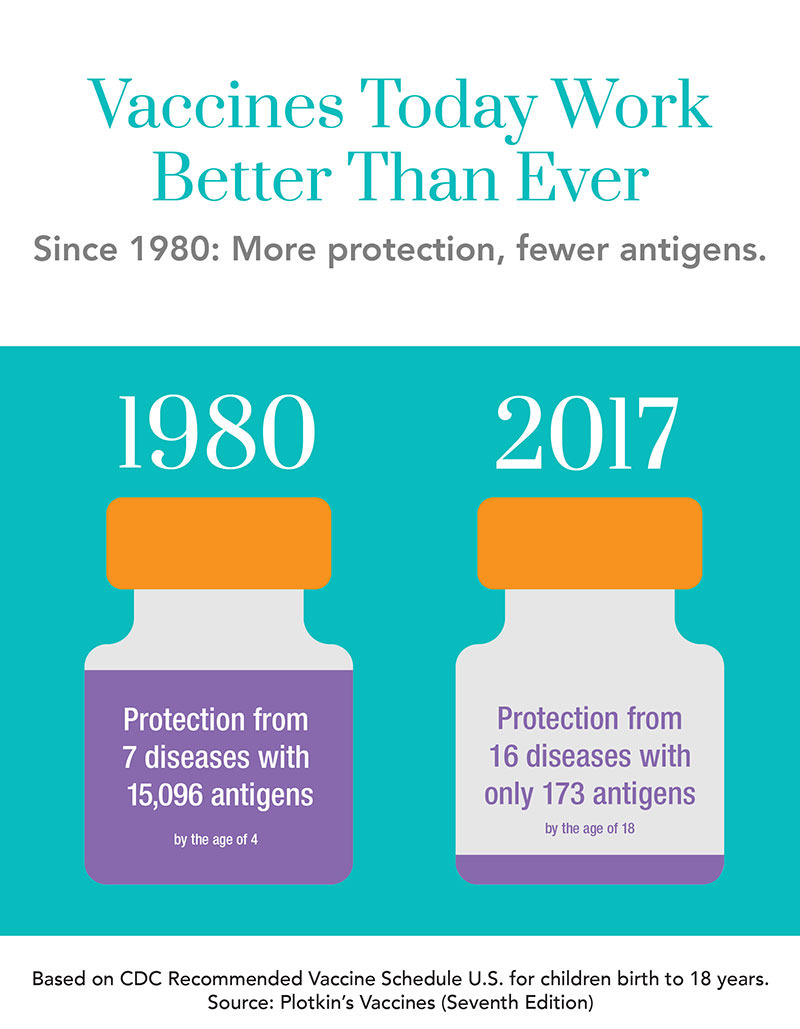No parents like to see their child cry or get upset. Many parents become uncomfortable, concerned and stressed out when they learn about the number of vaccines recommended for children. It does seem like a lot of shots! Please be assured that it is very safe for your child to receive several different vaccines during one visit. Mild discomfort immediately following a vaccine is still better than your child getting a potentially life-threatening and vaccine-preventable disease.
Scientific data show that this results in very few side effects. Studies also show that combination vaccines (which combine multiple vaccines into a single vaccine) pose no greater risk for side effects than vaccines given individually. These vaccines also are as effective in the combined form as they are when given separately.
Please know, too, that vaccines do not overload a child’s immune system. Vaccines contain ingredients called antigens, which tell the body’s immune system to create those antibodies.
Every day, a healthy child’s immune system successfully fights off thousands of antigens—the parts of germs that cause the body’s immune system to go to work.
The antigens in vaccines come from the germs themselves, but the germs are weakened or killed so they cannot cause serious illness. Vaccines contain only a tiny fraction of the antigens that children encounter every day in their environment, even if they receive several vaccines on one day.
- Kids are exposed to 2,000 to 6,000 antigens every day.
- A strep throat infection, for example, exposes children to at least 25 to 50 antigens. That’s comparable to the antigens in the vaccines that infants get at their two-month visit–the DTaP, IPV, HepB, Hib, and rotavirus vaccines combine to just 54 antigens.
And even though children receive more vaccines to protect against more diseases now compared to 30 years ago, the actual number of antigens in vaccines is dramatically less than decades ago because vaccine technology has improved, making vaccines more efficient.
- In 1980, the recommended vaccines contained more than 15,096 antigens.
- Today’s vaccines contain only 173 antigens in 12 vaccines that protect children and teens against 16 vaccine-preventable diseases.

Source: Plotkin’s VACCINES, 7th Edition
Sources:
CDC: The Childhood Immunization Schedule
American Academy of Pediatrics: Do Multiple Vaccines Overwhelm or Weaken the Infant’s Immune System?
Verywell: Antigen Counts in Vaccines
